110 years of Hong Kong Trams in photos
Primary tabs
Here's how their appearance has changed over the years:
A. Single-decker (1st Generation) [1904-c.1913]
The public service started in 1904, running these single-decker trams:
B. Double-decker, open upper deck (2nd Generation) [1911-c.1914]
Hong Kong Tramways (HKT) [1] : "Owing to strong passenger demand, the first double-deck tramcar was introduced in 1912. The tramcar was open-top with garden seats design."
HKT says 1912, but this newspaper article from June 1911 shows they started running earlier:
New Tram Cars.
The new low level tramcars, double deckers, made their usual run yesterday. The travelling public are taking a keen interest in this innovation of the Tram Company. [2]
This photo catches old and new passing each other:
C. Double-decker, open upper deck with canvas roof (3rd Generation) [1913-c.1924]
HKT [1] : "1913 - The open-top upper deck was not popular during rainy weather. Light canvas roof covers were then added. This kind of tram was categorized as the third-generation tram."
This letter to the editor in 1921 says the canvas roof wasn't much of an improvement:
Judge, therefore, of my ecstasy when ariving aloft I found all the seating accommodation thoughtfully moistened in order to secure a grateful coolth to the punishable part of one's anatomy, and the canvas awning, so carefully made flat, bulging with refreshing liquid that, percolating through, made one long for the society of your talented contributor, Adversarius, who, above all men, appears alone competent to descant faithfully on the charms of a saturated epidermis. [3]
He'd have to wait another two years for protection of his punishable parts...
D. Double-decker, open upper deck with wooden roof (3rd Generation) [1923-c.1926]
HKT [1] : "1923 - tramcars were fitted with permanent wooden roofs and roll-down blinds."
To identify which type of roof is shown in a photo, the wooden roof is darker and has a vertical end, while the canvas roof was light-coloured and ended with a sloping section.
E. Double-decker, enclosed upper deck (4th Generation) [1925-c.1951]
HKT [1] : "1925 - Newly designed tramcars with fully enclosed upper-deck were in service. The new tramcars were improved further by giving more rooms for the passengers and the upper deck carried first class passengers while the lower deck carried the third class passengers. This kind of tram was categorized as the fourth-generation tram."
Old and new again, passing over the Bowrington Canal.
And a closer view of the 4th-generation tram.
Look at the side of the tram, and just above the lower-deck windows you can see a horizontal lip along the length of the tram, dipping slightly at either end. It marks the edge of the roof of the original single-decker tram that these later trams were based on.
F. Double-decker (5th Generation) [1950-c.1986]
HKT [1] : "1950 - Hong Kong Tramways had undertaken extensive re-designing and started building its own trams. The appearance of the tram body was similar to the fourth-generation but streamlined and the tram no. 120 is still in service today. This kind of tram was categorized as the fifth-generation tram."
The "lip" is gone, and there are now flat panels along the sides of both decks. Also note that the roof is flat, as that will change with #H below.
G. Single-decker trailer [1965-1982]
HKT [1] : "1965 - Due to passenger demand, single deck trailer was introduced." and "1982 - Trailers and the conductor system were abolished."
H. Double-decker (6th Generation) [1986-????]
HKT [1] : "1986 - Tram cabin was re-designed with a new look and this kind of tram was categorized as the sixth-generation tram."
An easy way to tell these from the fifth-generation tram is to look at the roof. The HKT website again: "The resistor box at the rear of the lower deck was relocated to the rooftop of the front of the tram." It's the box on the roof marked with the number of the tram, "109" in this case.
I. Double-decker (Millenium) [2000-????]
HKT [1] : "Hong Kong Tramways launched the “Millennium” new tram on October 24, 2000."
They have a modern look that is quite different from earlier models. Too different it seems, as the latest models have returned to their traditional appearance.
J. Double-decker (7th Generation) [2011- ]
HKT [1] : "2011 - Hong Kong Tramways launched the seventh-generation tram on November 28, 2011. It is a combination of modern interior design with traditional tram body exterior. The face-lift allows tram’s iconic image to be maintained."
Differences in appearance from the sixth-generation trams include:
- From the front: Illuminated LED destination panels
- From the side: Full-height doors on entrances
If we have any tram experts reading, I need your help. I'd like to know the years that each type of tram was in service, then we can use this page to help date any old photo that shows a tram.
The HKT website tells us when a tram type started service, but can you help identify when it went out of service?
eg we know the first single-decker tram started running in 1904, but when did the last one go out of service? I've set the dates as "[1904-c.1913]", guessing that all the single-deck trams had been converted to double-deckers within a year of the first double-decker being introduced.
It may well have taken longer, and in some cases, (eg adding canvas roofs), could have been quicker. If you can give any more accurate "out of service" dates, please leave a comment below. Any other corrections also welcome, as are additional photos of old trams.
Regards,
David
References:
- The Hong Kong Tramways website has a good history of the service on their "Milestones" page: http://www.hktramways.com/en/copinfo/milestones.html
- Article on page 4 of The Hong Kong Telegraph, 24th June 1911.
- Extract from letter on page 4 of The China Mail, 25th May 1921.
Where I've looked:
- I've searched the local newspapers for articles with the word "tram" from 1910-1922 inclusive.
- The book "Early Hong kong Transport" by Cheng Po-Hung (English text).
- HKT website.

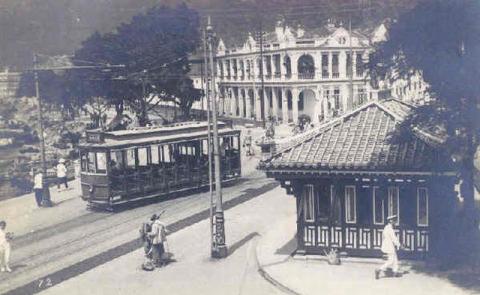
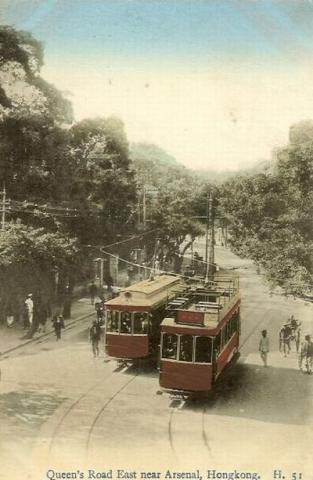
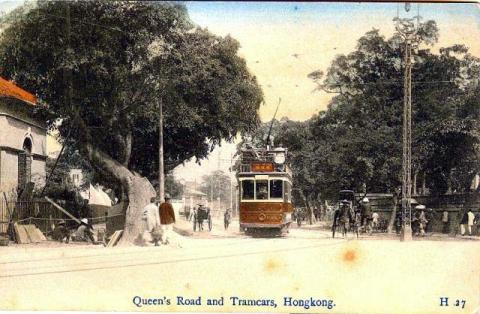
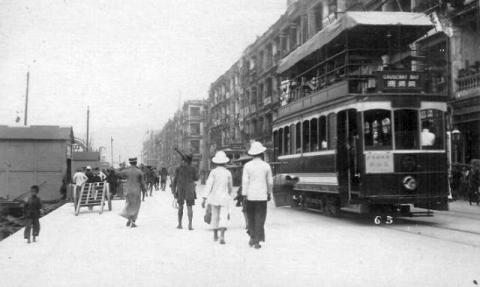
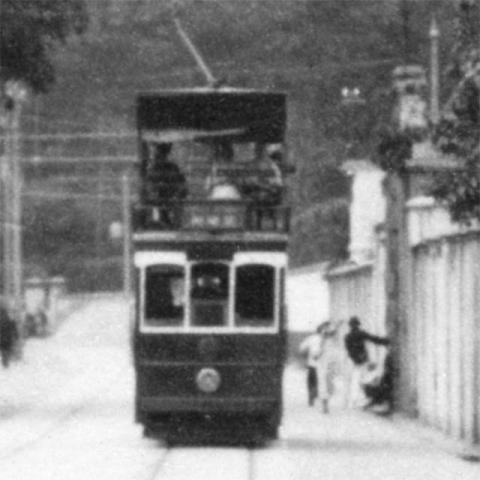
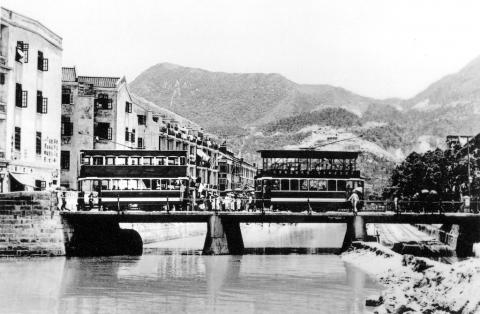
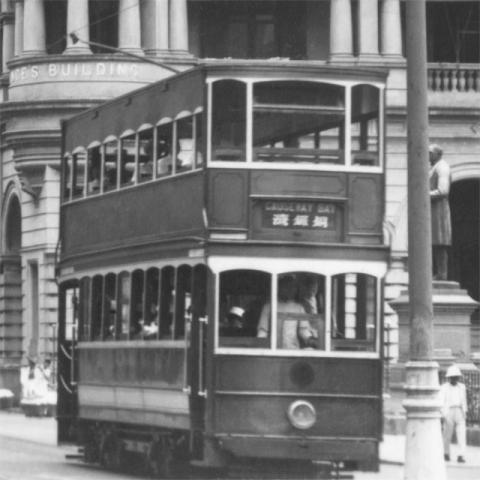
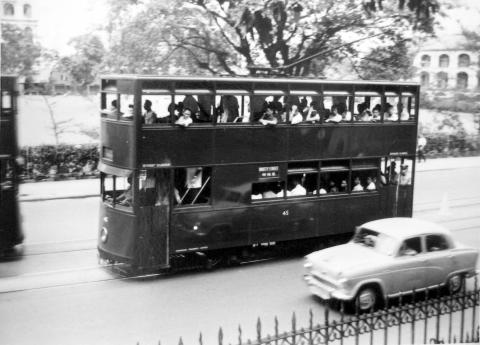
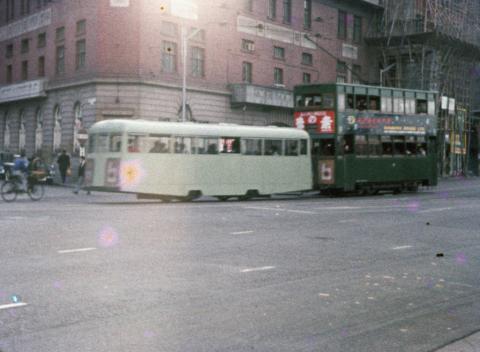

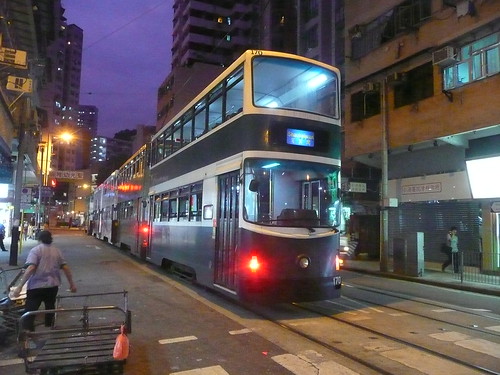
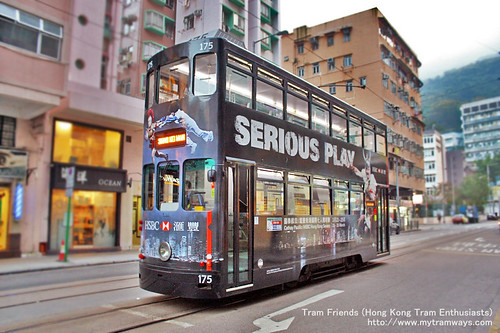


Comments
Hong Kong trams history
Dear David,
It is really an interesting and lovely article in one of your gwulo.com topics. Thank you very much.
regards/Edmond
Hong Kong Trams Book
David, I have a copy of a book called "Hong Kong Trams". It is one of a series of similar books - the others are "The Great Wall", "Dragons and Silk" and "The Terracotta Army". The book was published in 1998 by Pacific Century Publishers Ltd. in Hong Kong. ISBN 962-217-619-4. The publishers are the same as Airphoto International Ltd who do/did the "Over Hong Kong" books and aslo initially the Camerman Postcards. Many of the photos in this book are by Keith MacGregor (Camerman himself). I believe the copany is still in business in Hong Kong. You should be able to get a copy from them or the internet. Some of the postcard photos in the book are very similar to yours. Hope this helps. Ron.
Tramcars' types
Hi David,
Generally there is no specific/official “generation” categories on tramcars. As many of the cars in one generation were in fact just modifications of the previous, such as open top cars fitted with canvas roofs and then wooden roofs. This is not a clear classification to tram types.
Owing to lack of documental records specifically you can never be sure what was left in the works, so there is difficulty in deciding when the old trams were withdrawn. For example, the trucks on the old "Pre-war" trams were all transferred to the new "Post-war" bodies so it is hard to imagine that they lasted too long as new bodies were ready that had to wait for trucks.
Hence, I use below classifications to categorise tram types.
By using years and tram styles, trams can be caegorised by below six types:
1. Single-deck: 1904
2. Double-deck (open-top): 1912
3. Double-deck fully enclosed (Pre-war): 1925
4. 1950 series (Post-war)
5. 1987 series
6. 2011 Signature
The wordings “pre-war” and “post-war” are Chinese translations to distinguish the period they built. 120 was the first prototype of Post-war style in 1949.
Taken tram 12 as example and below thumbnail:
1. Single-deck: 1904 (3rd-class)
2. Double-deck (open-top): N/A ^
3. Double-deck fully enclosed (Pre-war): 1925
4. Post-war: 1952
5. 1987 series *
6. 2011 Signature: 2016
^ The first batch open-top trams were 37-46 by 1912 and they later fitted with canvas roofs from 1913 to 1924 and progressively fitted with wooden roofs from 1923. 12 was modified as wooden-roof style as shown in the middle view of the thumbnail.
* I5 trams were rebuilt using original underframes and first appeared with roof resistor boxes in 1986, and they were eventually replaced by new bodies by end-1991, i.e. 1987 series. 12 was the 1st tram of 1987 series (scrapped in 2002)
I believe the above is able to categorise all the trams. However, it’s difficult in researching precedent tram numbers from old photos due to rare clear views.
Besides, trailer 12 run together with post-war 12 during 1965-1982. What “generation” it belong to? Obviously, it’s an incomplete term without dates.
As to the Millennium trams built in year 2000, it’s not applicable to categorize as “generation” as only four were built and not in place of the entire fleet.
Regards,
Joseph
Hong Kong Trams History & Book
Thanks Edmond, I'm glad to hear that you enjoyed it.
And thanks for the book suggestion Ron. Please does it add any information about when a given type of tram went out of service, as that's what I'm most interested in.
Regards, David
re: Tramcars Generation
Hi Joseph,
I was hoping we'd hear from you, so thanks for writing.
Good point about the generations. The "1st / 2nd / 3rd...Generation" I quote above come from the HK Tramways website. Then I've used "A. / B. / C. ...". And I see you use 4 types! So as you say, there's no one standard. The difference between our methods is that I'm grouping by the external appearance of a tram, while it looks as though you're grouping by the way the tram is built?
Here are the notes I made from your message:
F. Double-decker (5th Generation) [1950-c.1986]
H. Double-decker (6th Generation) [1986-????]
re: Tramcars Generation
Hi David,
Thanks for your compliment.
You are correct on the grouping method, which is same as in my book "Amazing Ding Ding".
It is difficult to know whether the original old trams were scrapped or later converted, as both were still running during the transition. So the "out of service dates" on your "A, B, C and D" types might be unidentified.
I can only fill in the gap for 5th generation and 6th generation, i.e. [1950-c.1991] and [1987-2011]
For the 5th generation, it is impossible for two trams in same numbers exist at the same time. The fleet are replaced during 1987 to 1991. No.120 and those rebuilt in 1986 were lastly replaced at the same time in end-1991. My photo aims to distinguish their outlook differences as there has been misled that 120 was "originally" preserved since 1949.
For the 6th generation, you are right they are first appeared with roof resistor boxes. I attach another compared view showing the slight difference between the rebuild 41 and the new-built 12 - the height and lack of lifeguards.
I also took a rare view as interest showing two trams "1":
The green new one has nearly finished whilst the right old body pends to scrap. I have been photo recording the scrapping.
Regards, Joseph
re: Tramcars Generation
Thanks again Joseph. Here are the notes updated with your additional information:
F. Double-decker (5th Generation) [1949-1991]
H. Double-decker (6th Generation) [1986-2011]
- H.1 Double-decker (6th Generation) [1986-1991] : Has resistor box on roof. Built by putting a new body on an existing chassis. First appeared in 1986, they were short-lived and were soon replaced by H.2.
- H.2 Double-decker (6th Generation) [1987-2011] : Also has resistor box on roof, and external appearance is very similar to H.1. (see Joseph's photo of #41 & #12 for comparison), but built on a new chassis. First appeared in 1987, and in service until 2011.
If we're lucky, we may get some dated photos showing old A -D types that can help confirm the last dates they ran.
Regards, David
Trams you WON'T see in photos
IDJ has sent in some photos of designs for trams that never made it off the drawing board. First a couple of proposed trams for Hong Kong Island:
And then several proposals for trams in Tuen Mun:
Hong Kong trams - books
re: Tramcars Generation
A few points:
Same as "F", old 120 run during 1949 to 1991. A new 120 was replaced by 1991. That year also the "H1" being replaced, i.e my photo of 41 (H1) was scrapped and replaced by new 41 (H2).
H2 still running now, the 1st scrapped body was in 2011.
Best wishes, Joseph
Hong Kong tramcar test-run on 31 July 1904
The following two photos show the curious crowd are watching the Hong Kong tramcar test-run in Central on 31 July 1904. Full service began on 13 August 1904 (Saturday) as reported by the Hong Kong Daily Press.
Edmond
More trams!
Thanks to Tony for the book suggestion and Edmond for the extra photos.
Thanks to Joseph for the clarification too, let's see if I've got it right this time:
H. Double-decker (6th Generation) [1986-????]
- H.1 Double-decker (6th Generation) [1986-1991] : Has resistor box on roof. Built by putting a new body on an existing chassis. First appeared in 1986, they were short-lived and were soon replaced by H.2.
- H.2 Double-decker (6th Generation) [1987-????] : First appeared in 1987. Also has resistor box on roof, and external appearance is very similar to H.1. (see Joseph's photo of #41 & #12 for comparison), but built on a new chassis. In 2011 these trams started to be replaced by the current model, "J. Double-decker (7th Generation) [2011- ]". As of March 2014 the transition is not complete, so you can still see these H.2 trams in use.
news
Ohh really valuable! I wonder if that news is still available.
Joseph
fleet dates
Thanks David!
H.1 consists of fifteen trams, they are replaced by H2 in end-1991.
As for single deckers, I guess the last date might be around 1925 onwards since the double deckers were introduced. Having seen a couple of monochromes and it's hard to find any single decker while the canvas-top/wooden-top existed.
Regards,
Joseph
Post-war body
For Type "F" only two bodies were "originally" preserved. In 1985 tram 12 was shipped for display and now preserves in a railway museum in the USA. In mid-1990s tram 50 was donated to the HK Museum of History.
single decker
Found a news in c.1950. There's a single decker tram whilst most were double deckers.
Trailers
G. Single-decker trailer [1965-1982]
The first trailer in service was in 6 Aug 1964, whilst 1965 is the year for the mass production.
Regards, Joseph
re: Trailers
Thanks for the extra information,
Regards, David
First tram
Dated back 110 years ago today (2 July 1904), the first tram tested running from the depot to Happy Valley.
test-run
Hi Edmond,
I believe the test-run was on 30 July, i.e. the official anniversary date. As far as I know there are extra test runs. The service date on press will be an important proof indeed.
Best wishes, Joseph
Tramcar types
To be honest I believe the official website (and media) has been following an inappropriate classifications on tramcar types by using the term 'generation'. I remain the point that classifying the tramcar types by year of built/service, i.e.
a) 1904 fleet;
b) 1925 fleet;
c) 1950 fleet;
d) 1987 fleet; and
e) 2011 fleet
For the trailers of 1964 and Millennium trams of 2000 I doubt what 'generation' should be used, so I categorise separately.on the 1904 fleet to pre-1949 batch.
Regards, Joseph
Logos over the years
HK Tramways logos, 1904-2019, by Joseph
New HK Tramways book
I have just published a new HK tram book collaborating with John Prentice, TLRS Chairman. The original 1970 version by Atkinson and Williams is highly regarded as the definitive history of the tramway, our new edition is doubled of the 1970 version, as a continuity of updating this unique tramway system in the world.
Book review from UK. http://www.orientalmodelbuses.co.uk/Books/HKT-3.htm
Regards, Joseph
Two more first generation trams
On Flickr from the National Archives UK:
The Street railway journal 1905
Found this digitized book "The Street railway journal" from February 4th, 1905. On page 211, an article "Electric Tramways in Hong Kong, China" is published. It gives a lot of technical details on equipment and has some photos including a car shed with a capacity to keep 35 cars.
The article also states:
There are twenty-six single deck motor cars, ten of being the combination type, with an enclosed portion in the center and an open platform provided with seats at either end. The remaining sixteen cars are of the open cross-bench type.
…….The combination car has a seating capacity for thirty-two passengers, and the cross-bench cars for forty-eight passengers.
tram depot
Here's a photo of the first tram depot with trams inside:
HK Tramways
Hong Kong Tramway Engine Room
First generation tram car